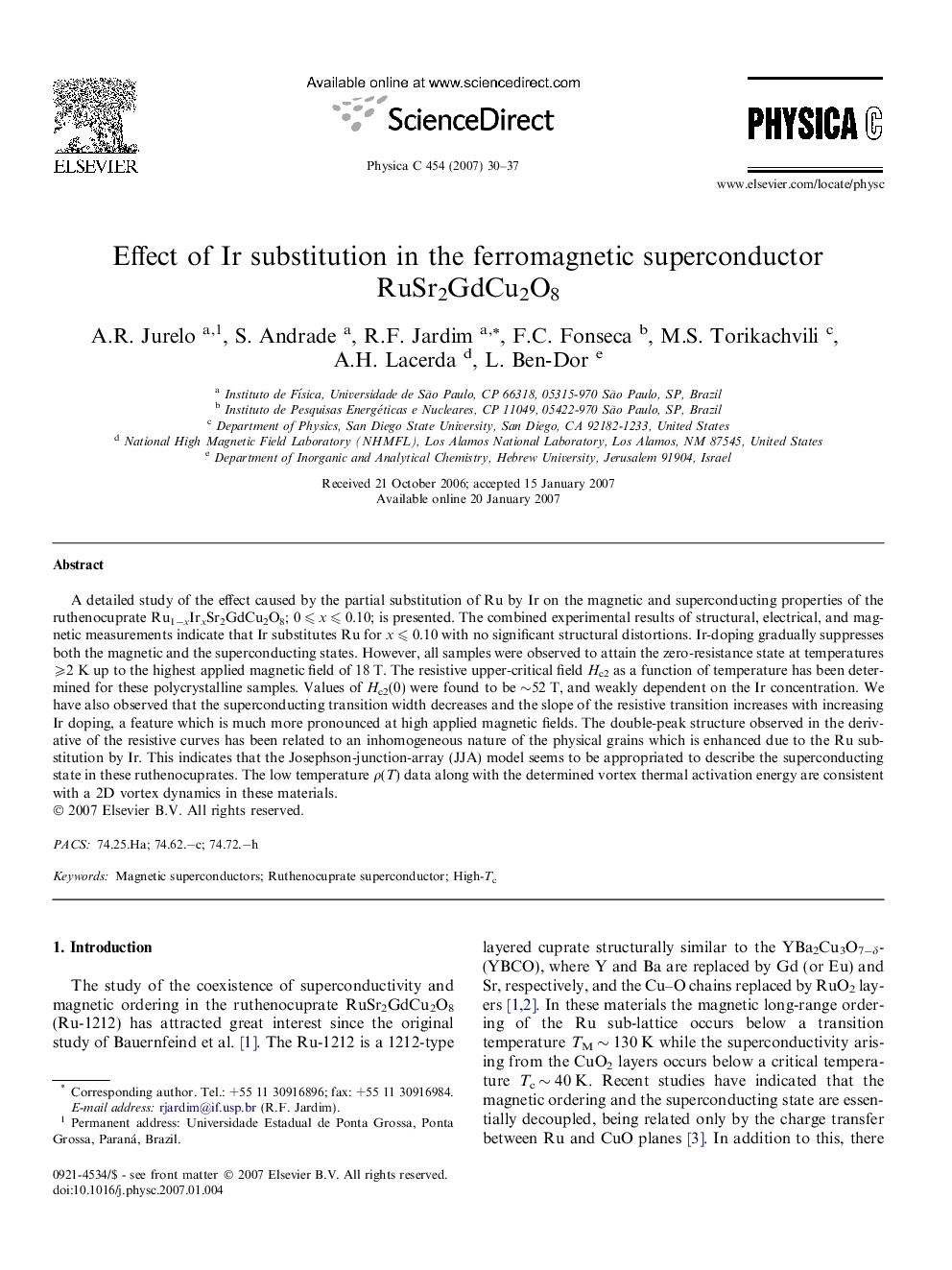| Article ID | Journal | Published Year | Pages | File Type |
|---|---|---|---|---|
| 1820164 | Physica C: Superconductivity and its Applications | 2007 | 8 Pages |
A detailed study of the effect caused by the partial substitution of Ru by Ir on the magnetic and superconducting properties of the ruthenocuprate Ru1−xIrxSr2GdCu2O8; 0 ⩽ x ⩽ 0.10; is presented. The combined experimental results of structural, electrical, and magnetic measurements indicate that Ir substitutes Ru for x ⩽ 0.10 with no significant structural distortions. Ir-doping gradually suppresses both the magnetic and the superconducting states. However, all samples were observed to attain the zero-resistance state at temperatures ⩾2 K up to the highest applied magnetic field of 18 T. The resistive upper-critical field Hc2 as a function of temperature has been determined for these polycrystalline samples. Values of Hc2(0) were found to be ∼52 T, and weakly dependent on the Ir concentration. We have also observed that the superconducting transition width decreases and the slope of the resistive transition increases with increasing Ir doping, a feature which is much more pronounced at high applied magnetic fields. The double-peak structure observed in the derivative of the resistive curves has been related to an inhomogeneous nature of the physical grains which is enhanced due to the Ru substitution by Ir. This indicates that the Josephson-junction-array (JJA) model seems to be appropriated to describe the superconducting state in these ruthenocuprates. The low temperature ρ(T) data along with the determined vortex thermal activation energy are consistent with a 2D vortex dynamics in these materials.
